If you’re worried about having a shady garden, don’t fret! While many plants require direct sunlight, there are plenty that thrive in partial or full shade. Opting for perennials is a great choice for your shaded space, as they require less maintenance than annuals. From trees and shrubs to flowers and vegetables, there’s an abundance of options for shade-loving plants. Some great choices for shrubs include Oakleaf Hydrangea, Mountain Laurel, Lily of the Valley Shrub (also known as Japanese Pieris or Andromeda), Yew, Serviceberry, Summersweet (Clethra), and Camelia. Don’t forget about trees – consider planting Magnolia, Japanese Maple, Crape Myrtle, Sumac, Redbud, or Hornbeam (Ironwood or Musclewood) for a touch of shade and beauty. For flowering plants, you might try Leopard Plant (Ligularia), Monkshood (Wolfsbane, Aconitum), Violas, Hellebores (Lenten Rose), Siberian Bugloss, Heuchera (Coral Bells), or False Goat’s Beard. With so many options, a shady garden can be just as stunning as a sunny one!
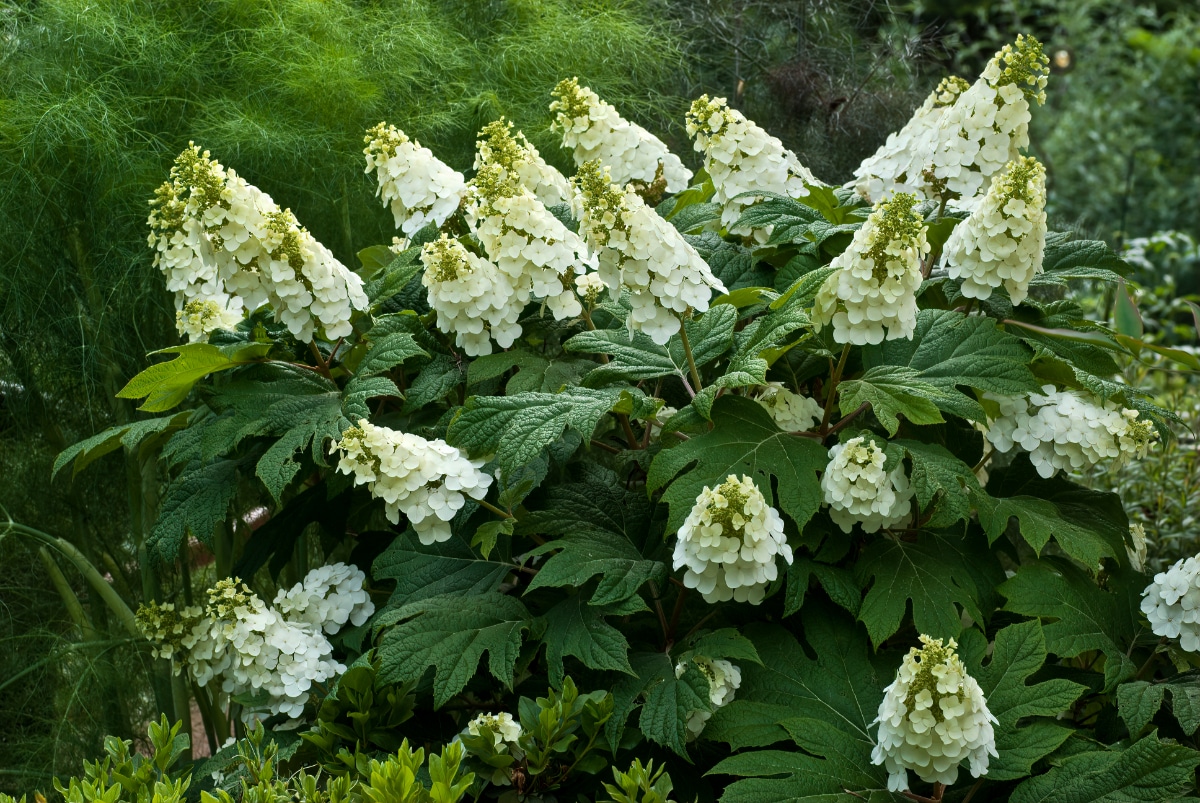
If you’re looking for a stunning addition to your garden, consider the oakleaf hydrangea. This perennial plant has a unique shape and boasts vibrant colors that will thrive in partially shaded areas, making it perfect for those who have a mix of sun and shade in their yard. While it prefers a bit of sunlight, it can also withstand full shade. During summer, the leaves are a bright and vivid green, but come fall, they turn a gorgeous burgundy or red before transitioning to bronze. The flowers are equally beautiful with their bright white blooms that take on a tint of pink as they mature, serving as a beautiful highlight to your outdoor space. Best of all, the oakleaf hydrangea is hardy enough to survive and thrive in zones 5b-9. Give your garden a pop of color and unique shape with this stunning plant. Another great option to consider is the mountain laurel.
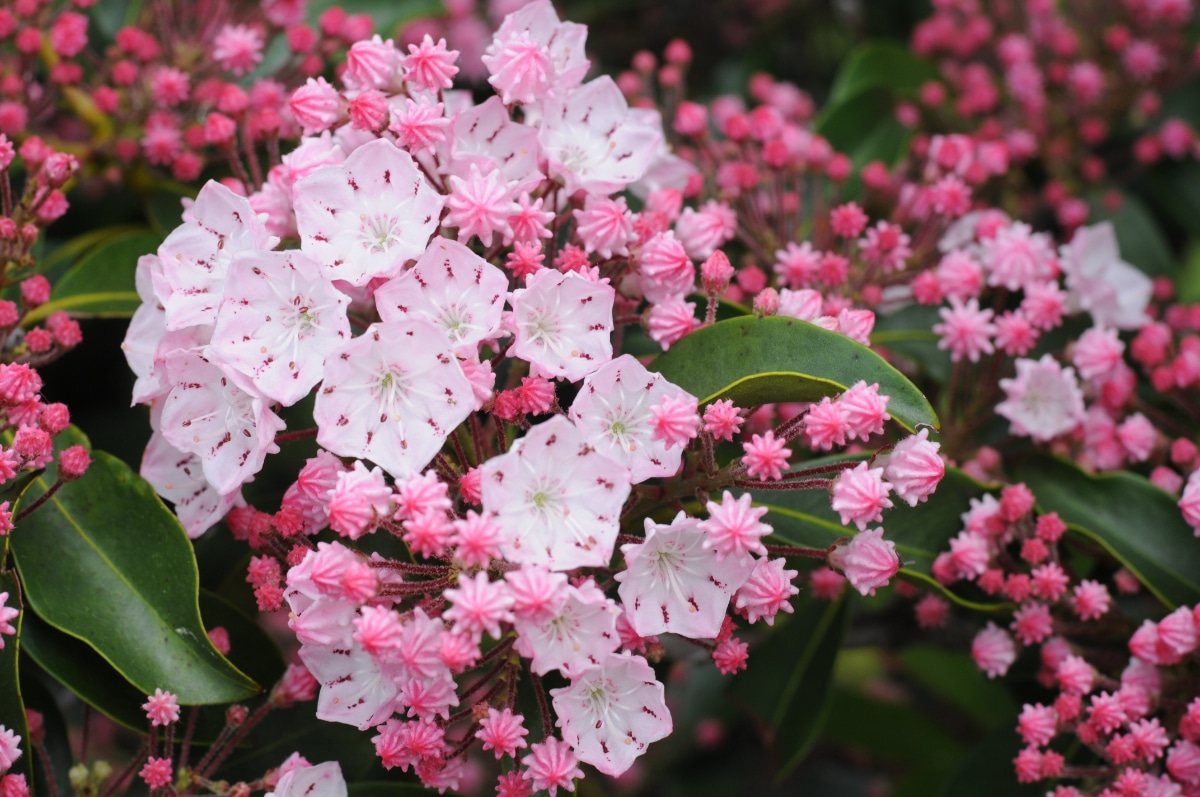
The sight of the Mountain Laurel perennial is straight out of a fairy tale, adding immense appeal to any landscape. This native plant blooms huge bunches of beautiful white flowers, but there are also many outstanding color options available. For a stunning display of bright pink flowers, we recommend the “Pink Charm” option. Another great choice is “Minuet,” with light and dark pink flowers and a vibrant red band. If you’re looking for something unique, try the “Peppermint” cultivar, which boasts bright white flowers with dark red streaks radiating from the center. Even when not in bloom, the Mountain Laurel’s dark green evergreen leaves make it appealing in your yard. This shrub prefers partial sun or light shade but can also grow in a fully shaded location. However, it may produce fewer flowers in full shade. It is hardy to zones 5-9. Another appealing option is the Lily of the Valley Shrub, also known as Japanese Pieris or Andromeda.
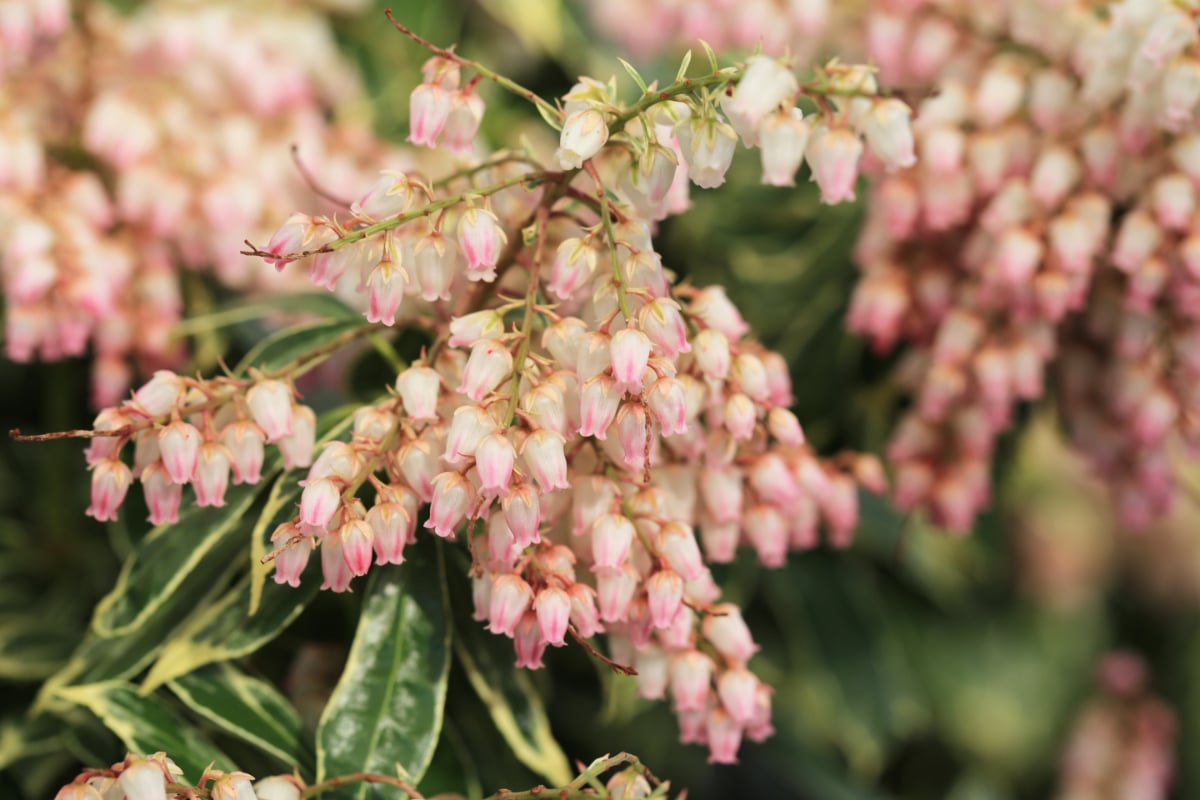
The Lily of the Valley shrub is a dainty and charming perennial that seems to have stepped right out of the Victorian era. This slow-growing shrub boasts delicate white or pink flowers that bloom in the spring, adding a touch of elegance to any garden. Even when not in bloom, the lush evergreen leaves are captivating and visually appealing. The shrub owes its name to the drooping chains of flowers which resemble the groundcover lily of the valley. While partial shade is ideal for this shrub, full shade is not recommended. If you’re looking to add this beauty to your garden, be aware that it’s hardy in zones 5-8.

With proper care, this yew plant can live for numerous years. It is highly versatile, which makes it a popular choice for landscaping. Available in various sizes and shapes, you can undoubtedly find one that fits your needs. The yew plants serve as natural hedges, borders, or screens along property lines, making it ideal to separate different sections of your yard. One of the most impressive features of the yew shrubs is they thrive in full sun, part shade, or full shade. The evergreen yew has a long life span, with soft dark-green needles that look great all year long. The bright-red cones produced by this plant resemble berries. Depending on the variety, some can grow up to 30 feet tall, while others only reach 2-4 feet. When deciding which one to get, ensure that you choose an appropriate size for your space. Yews are easy to prune, making it easier to maintain its shape and size. Additionally, these plants are hardy to zones 4-7.
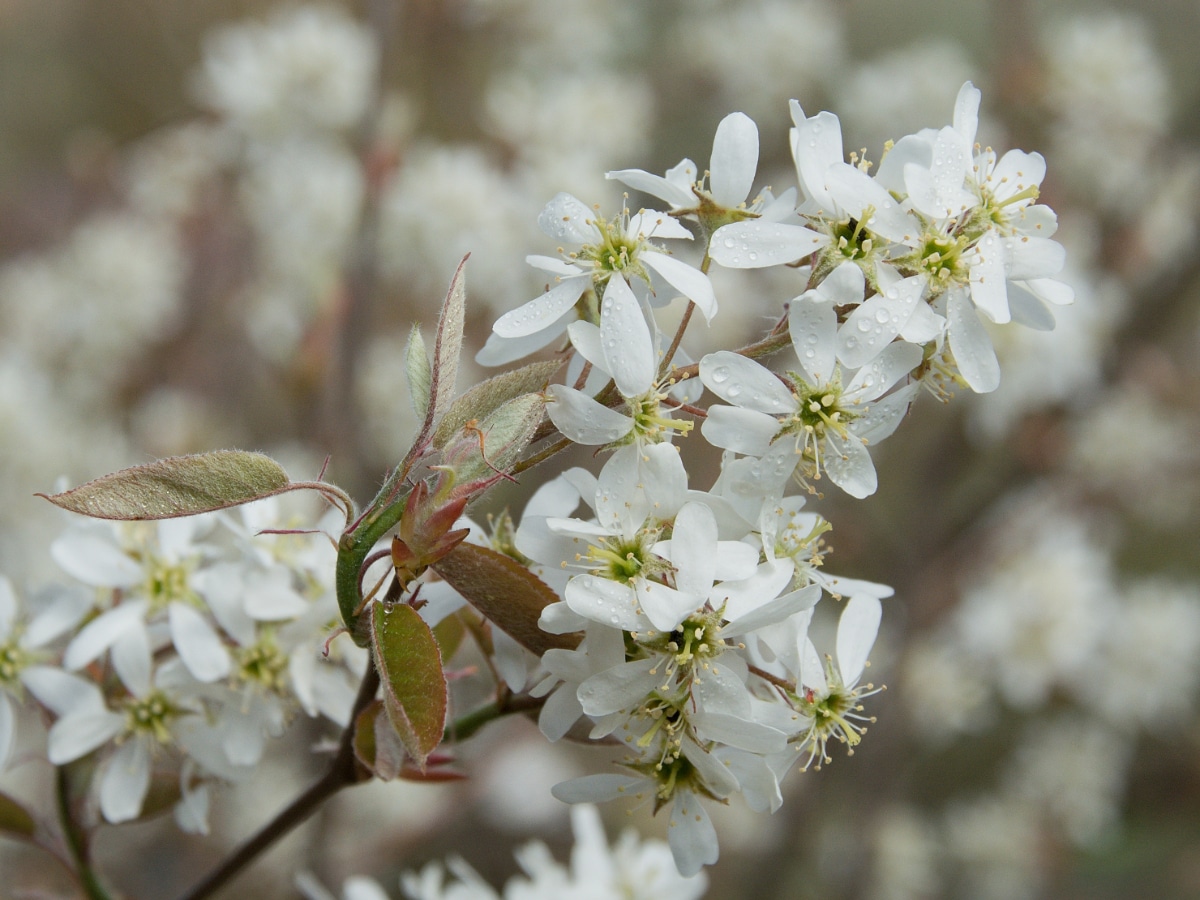
Despite being a native perennial tree that grows more like a shrub, Serviceberry is not well-known to many people. Its aesthetic appeal lasts throughout the year with its small white flower clouds attracting numerous pollinators during springtime. During summer, edible purple berries are produced and loved by birds. In fall, the dark-green leaves transform into deep red, creating a stunning element in the backyard when other trees are losing their leaves and flowers have wilted. Serviceberry thrives in partial shade but not in full shade and can withstand zones 2-9 depending on the cultivar. Another plant that deserves recognition is Summersweet (Clethra).
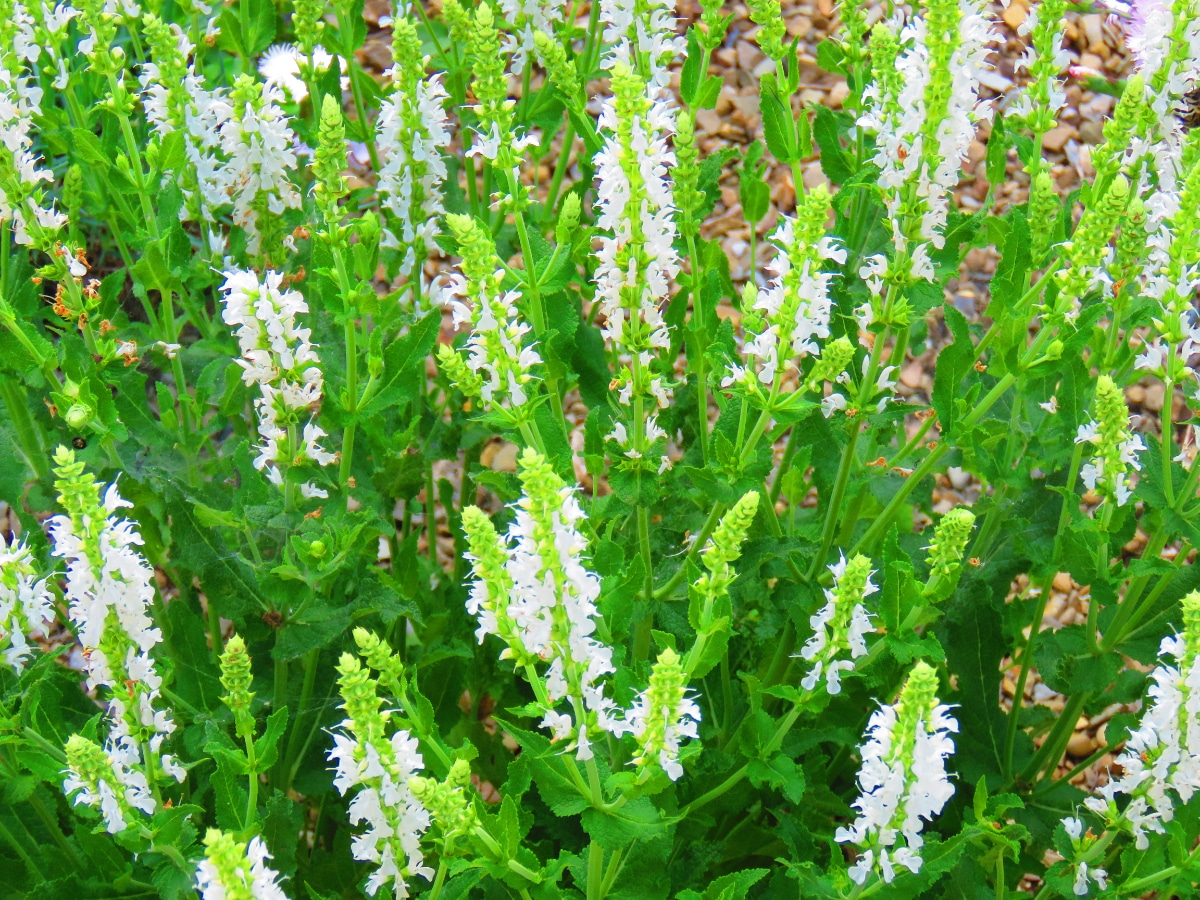
If you’re looking to attract hummingbirds to your garden, Summersweet is the perfect addition. This shrub has beautiful plumes of white or pink flowers that bloom in late summer, which are a favorite food source for hummingbirds. Additionally, Summersweet is an important food source for insects when other flowers have stopped blooming. The leaves of this native shrub are a deep green and glossy during spring and summer, but turn golden yellow in the fall. Summersweet prefers partial shade or full sun and is deer-resistant, making it an excellent choice for areas with high deer populations. Plant it along the borders of your yard to deter deer. With a height of 4-6 feet, it’s hardy to zones 3-9. Another great option for your garden is Camelia.
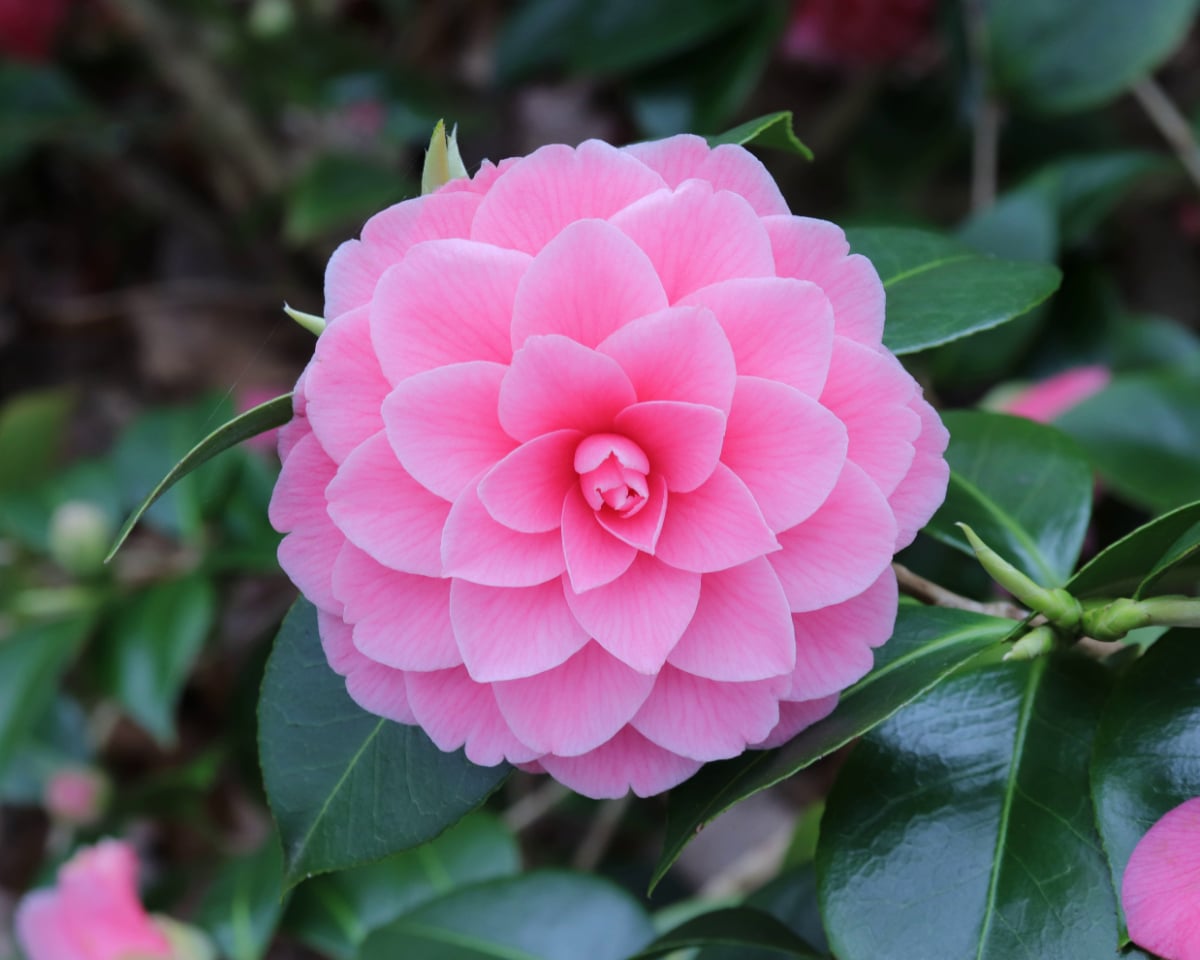
A must-have for any garden, the Camelia is a breathtaking flowering shrub that produces stunningly large, fragrant flowers in various colors throughout fall and winter. With glossy deep-green leaves that have a slightly serrated edge, this perennial shrub is easy to care for and boasts a long life span. What’s more, it thrives in full or partial shade, making it perfect for gardens with less sun exposure. If you’re looking to add a touch of elegance and beauty to your yard, the Camelia is the perfect choice. And while we’re on the topic of shade-loving trees, don’t forget the Magnolia!

The presence of Magnolia trees in any yard can add a touch of magic to it. Apart from being shade-loving, these trees are also known for their stunning blooms. The flowers come in vibrant shades of pink or purple and emit a strong fragrance. Additionally, Magnolias have large, glossy evergreen leaves that are deep-green in color. Depending on the variety, some Magnolia trees can grow up to 25-feet tall, while others stay around 15-feet. It is important to know which type you are getting so that you can choose one that suits your space requirements. These trees are hardy in zones 4-9. They thrive in light shade, but if you live in a hot climate, it is best to plant them in an area that provides protection from the mid-summer sun. Another beautiful tree that can be added to your yard is the Japanese Maple.
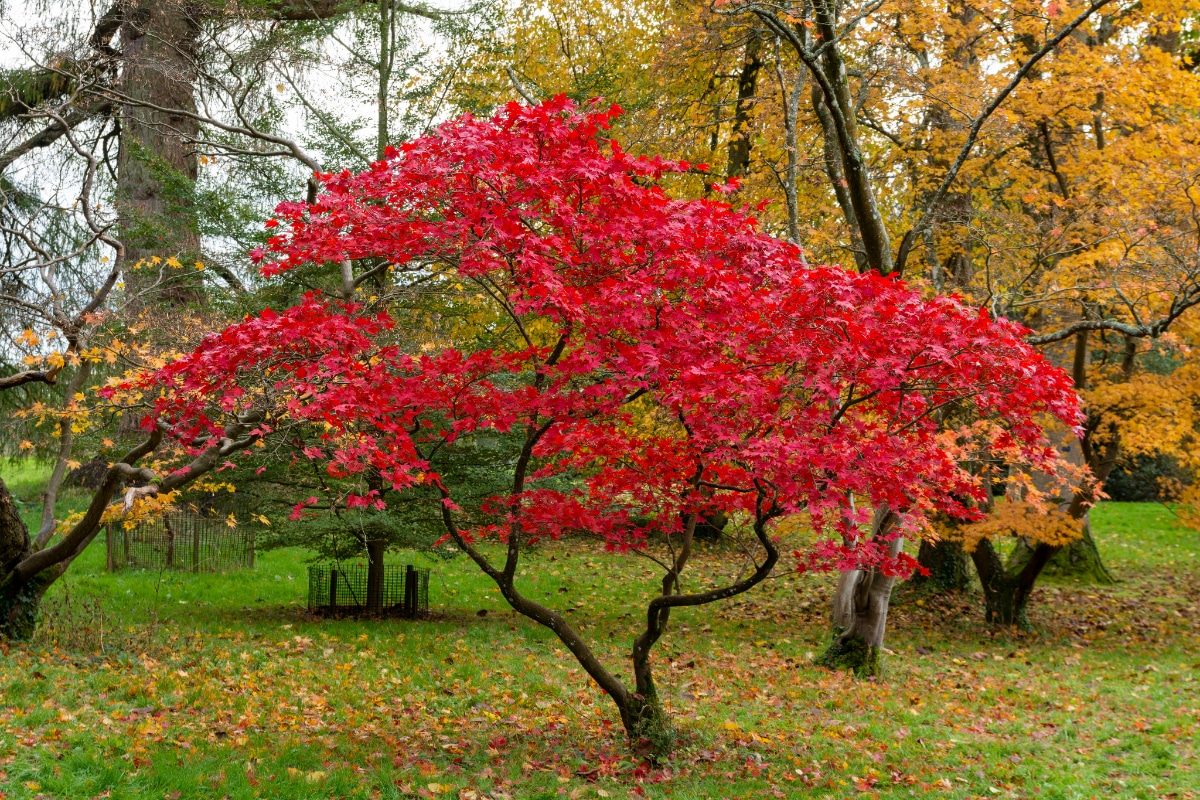
The Japanese Maple tree is a crucial element in creating a stunning Japanese style garden. The leaves of this tree are absolutely striking as they come in either green or red and have multiple lobes, which adds an interesting visual dynamic to any yard. However, during the fall season is when they really grab your attention. The leaves transform into a captivating and attractive shade of red, yellow, orange, or purple that gives off a regal aura. While the flowers of this tree are small and pretty, it’s the foliage that draws people to it. To thrive properly, the Japanese Maple should be placed in filtered sunlight or partial shade. Additionally, this tree ranges in size from 15-25 feet and can survive in zones 5-9.
Another tree that adds a unique touch to any garden is the Crape Myrtle. This tree is known for its beautiful and delicate flowers that bloom in the summer months, producing vibrant colors that range from pink to red and even white. Not only is the Crape Myrtle visually appealing, but it’s also easy to care for, making it an excellent addition to any garden. With proper care, this tree can grow up to 30 feet tall and is able to withstand hot and dry climates. So if you’re looking for a low-maintenance tree that will add a pop of color to your garden, consider the Crape Myrtle.

If you’re planning to grow Crape Myrtles in a shady area, it’s important to choose the right variety. While not all Crape Myrtles thrive in shade, there are some that do. The breathtaking summer blooms of these trees come in a range of colors including pink, white, red, and lavender. Crape Myrtles are quite hardy and can tolerate both drought and partial shade, making them a versatile choice for any landscape. However, it’s worth noting that filtered sunlight is preferable to full shade if you want to maximize flower production. These trees can grow quite tall, reaching heights of up to 40 feet, and are best left unpruned except for occasional maintenance trimming. In addition to their stunning blooms, the cinnamon brown trunks of Crape Myrtles add an extra layer of interest and visual appeal to any outdoor space.
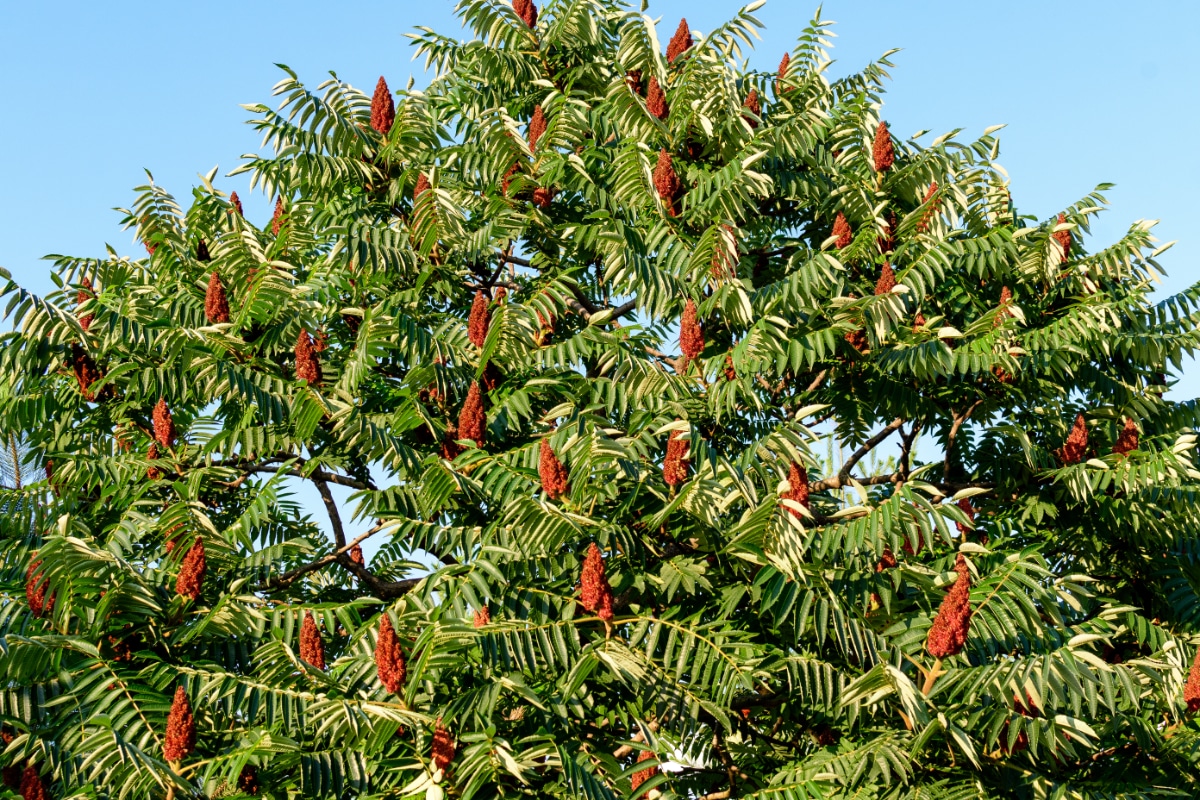
Sumac is an excellent choice for landscaping due to its versatility. It’s drought-tolerant and can thrive in areas with poor soil or limited sun exposure. With deciduous varieties that produce stunning fall foliage and evergreen types that offer year-round color, Sumac trees are a great option. Smooth Sumac and Staghorn Sumac are the most popular options available at plant nurseries. These trees also provide shelter and food for wildlife, making them a favorite among nature enthusiasts. In the spring, the trees boast abundant and eye-catching flowers with brilliant yellow-green coloring. The berries of Sumac trees are bright red and plentiful, lasting through winter months. This makes them a crucial food source for birds when other options aren’t available. Depending on the variety, Sumac is hardy in zones 3-9. Overall, Sumac is an all-around excellent choice for any landscaping needs.
Another great option for landscaping is Redbud.

The Redbud is a great option for those who want a low maintenance tree. Its blooms are stunning and it’s very easy to take care of, making it a popular choice for landscaping. The Redbud works well as a border plant but also stands out when planted alone. With its long, green, heart-shaped leaves, this tree typically grows to around 15-35 feet tall. While it doesn’t live as long as other trees, usually only surviving for 15-20 years, it’s definitely worth planting for the beautiful spring blooms. To thrive, Redbuds prefer partially shaded areas and can withstand harsh conditions in zones 4-8. Another low maintenance option to consider is the Hornbeam, also known as Ironwood or Musclewood.
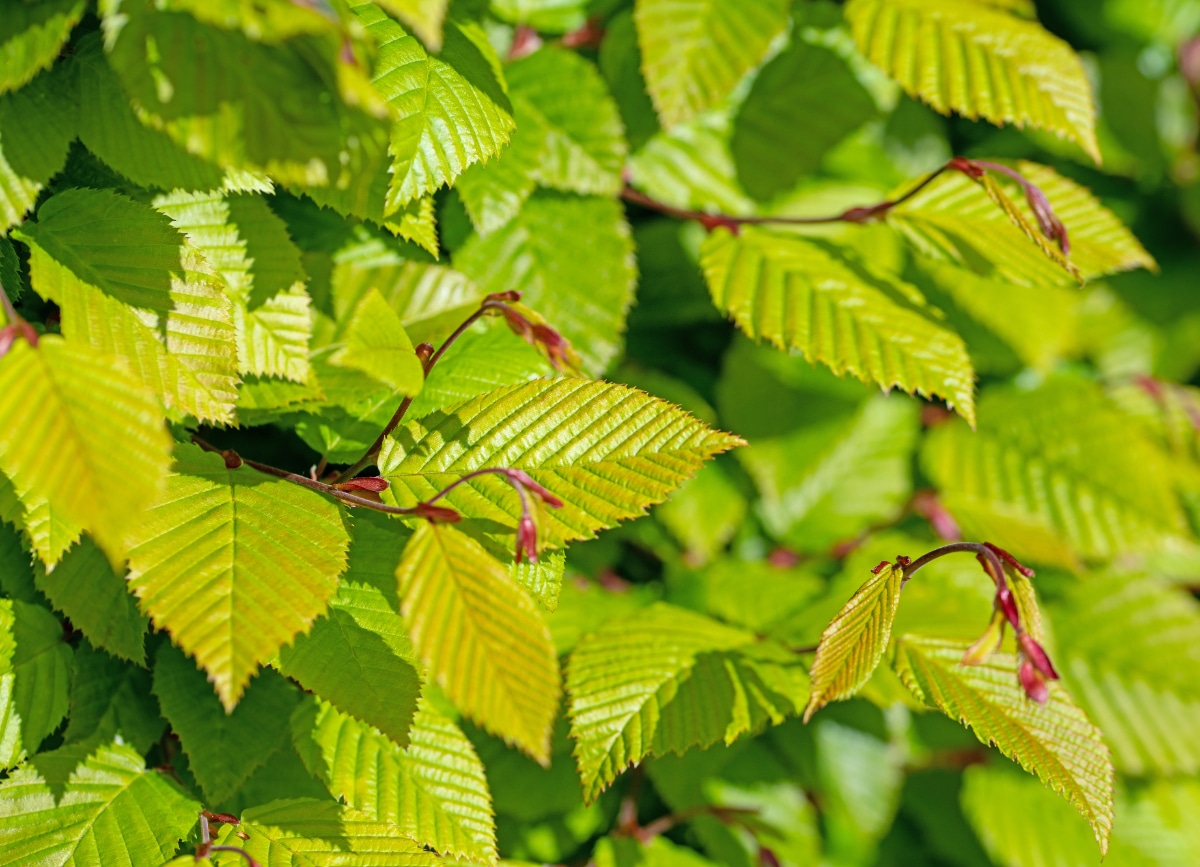
Hornbeams are a tough tree species that grow modestly in size, making them an ideal shelter for various wildlife. These trees thrive in partial shade and can even provide shade themselves to other plants and animals. During the early summer season, green catkins bloom on the Hornbeam, displaying narrow, cylinder-shaped flower clusters. These flowers eventually give way to small nuts that are a source of food for birds and other small creatures. In the fall, the Hornbeam’s leaves take on a stunning reddish-orange color while its bark remains largely smooth and slate gray. Often, branches of this tree species are used as nesting shelters by birds and other small animals. Hornbeams can grow anywhere between 25-35 feet and can tolerate zones 3-9. If you’re looking for other shade-loving plant options, Leopard Plants (Ligularia) are a great choice.
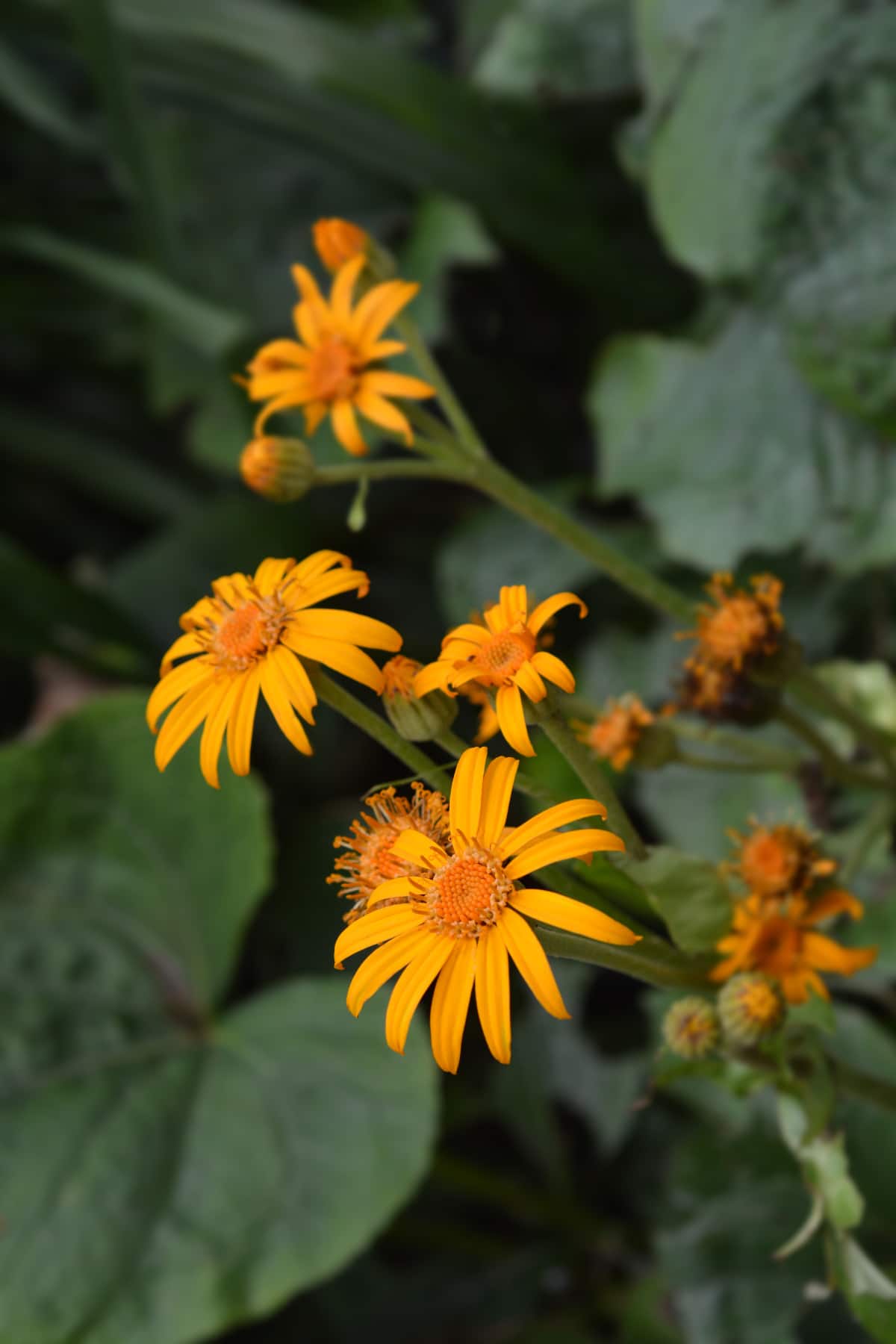
The Leopard Plant is a delightful surprise waiting to be discovered. This plant boasts a vast collection of varieties that make it the perfect addition to any shade garden. It also has the added benefit of not being appealing to deer, so you can enjoy its beauty without worrying about it being devoured. The Ligularia’s large glossy leaves are a deep green on top and a regal purple underneath. Its bright yellow flowers bloom on spiky stalks above the foliage, making them impossible to miss. The striking contrast between the dark green leaves and the brilliant yellow flowers is truly awe-inspiring. What’s more, these plants are highly adaptable and will thrive in both full or partial shade. They are hardy enough to grow in zones 4-9. Another plant worth mentioning is the Monkshood, also known as Wolfsbane or Aconitum.
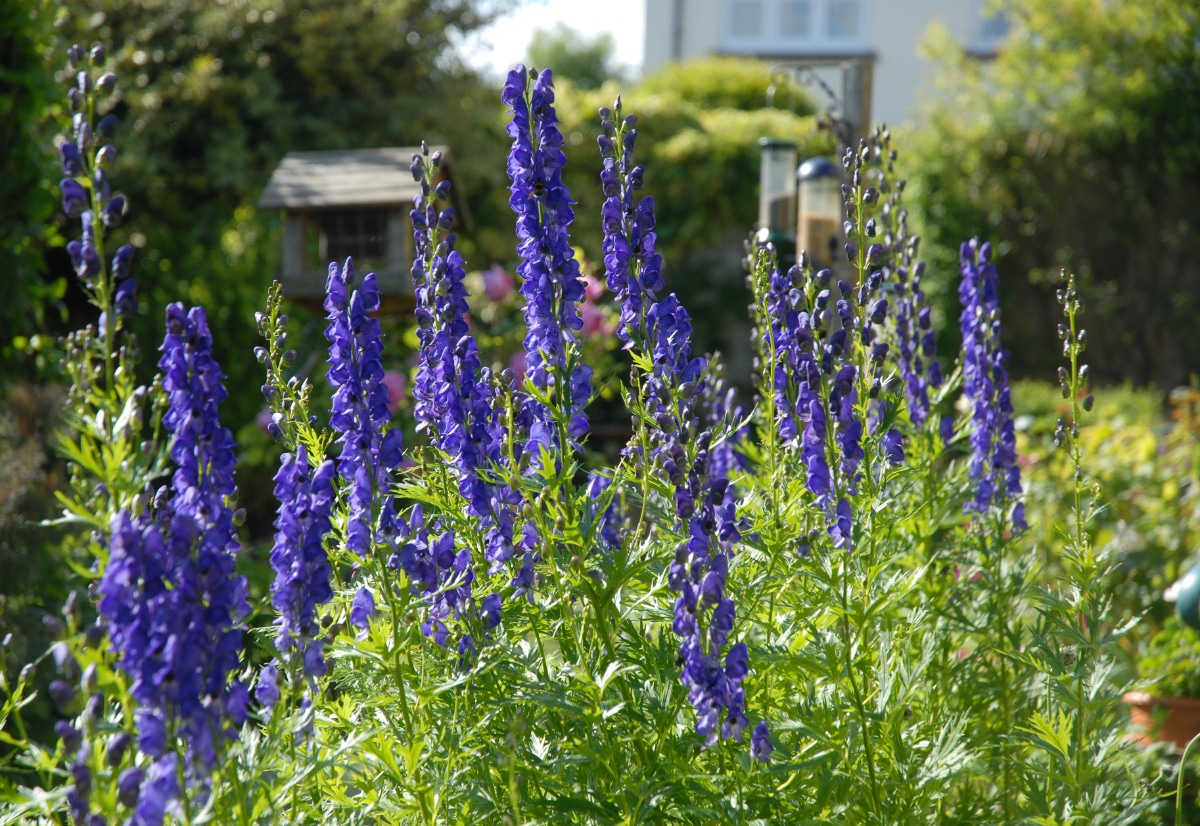
This stunning flower is both beautiful and dangerous. The captivating colors of the Monkshood flower will leave you enchanted, with its deep blue and purple fall-blooming blooms standing tall on a 2-3-foot stalk above its dark-green foliage. It’s perfect for growing in shade gardens due to its preference for partial shade. However, it’s essential to remember that this plant is highly toxic to both humans and animals. As such, it’s crucial to avoid planting them where children or pets can easily access them. This hardy plant can thrive in zones 3-7.
Moving on to Violas…
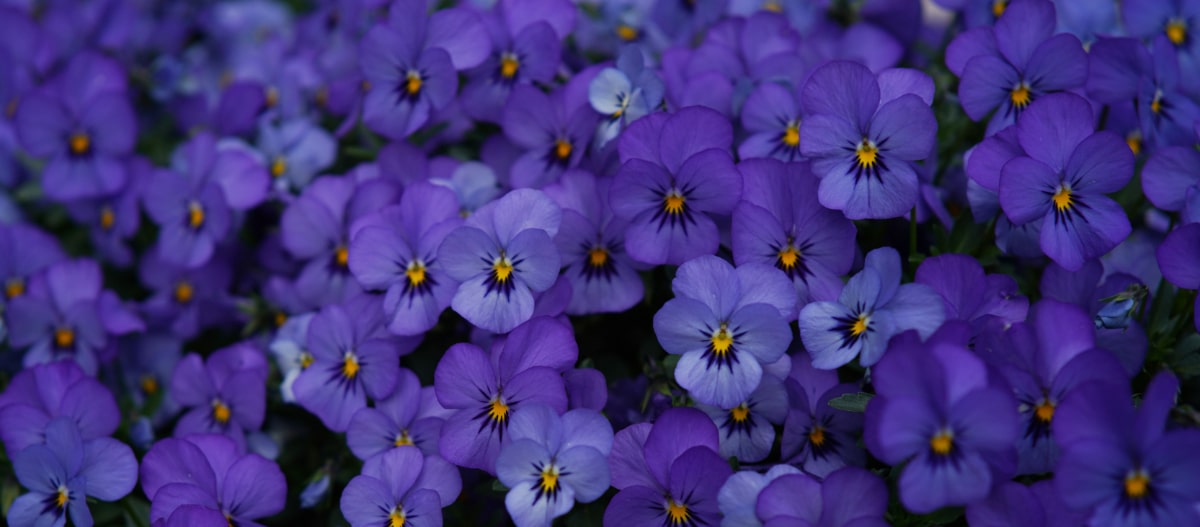
An all-time favorite among garden enthusiasts, the Viola is a widely popular flower in the western part of the world. This dazzling bloom thrives best under partial shade rather than full sun. Growing close to the ground, they produce abundant flowers that exude an entrancing charm wherever you plant them. Perfect for borders or beddings, Violas quickly fill empty spaces adding vibrancy to your garden. With plenty of varieties and color combinations to choose from, you can easily find one that matches your preferences. Violas are robust perennials, especially in zones 6-11. However, in colder climates, they can only survive for a year.
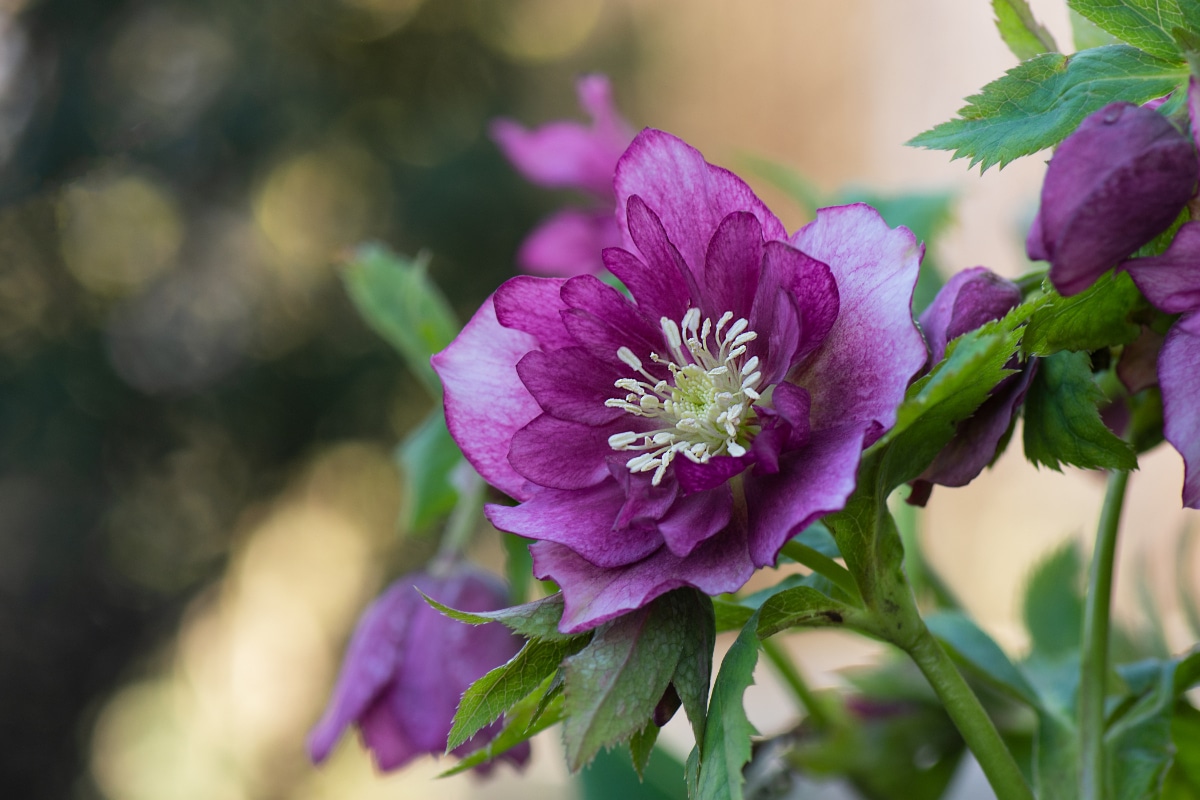
Hellebores have gained immense popularity as a must-have garden flower. These plants are perfect for any shade garden, and their adaptability to drought, neglect, and shade makes them an ideal flowering plant for all. The large winter blooms of Hellebores come in an array of colors ranging from white, green, purple to yellow. Two main types of Hellebores can be found, namely caulescent (with stems) and acaulescent (without stems), both of which are equally stunning. However, acaulescent Hellebores are the most easily available and long-lasting in gardens. It is advisable to buy Hellebores when they are in bloom so that you can determine their flower color. Most varieties are unnamed, and if the parentage of the strain is unknown, it’s challenging to predict the flower type accurately. Hellebores grow well in zones 4-9.
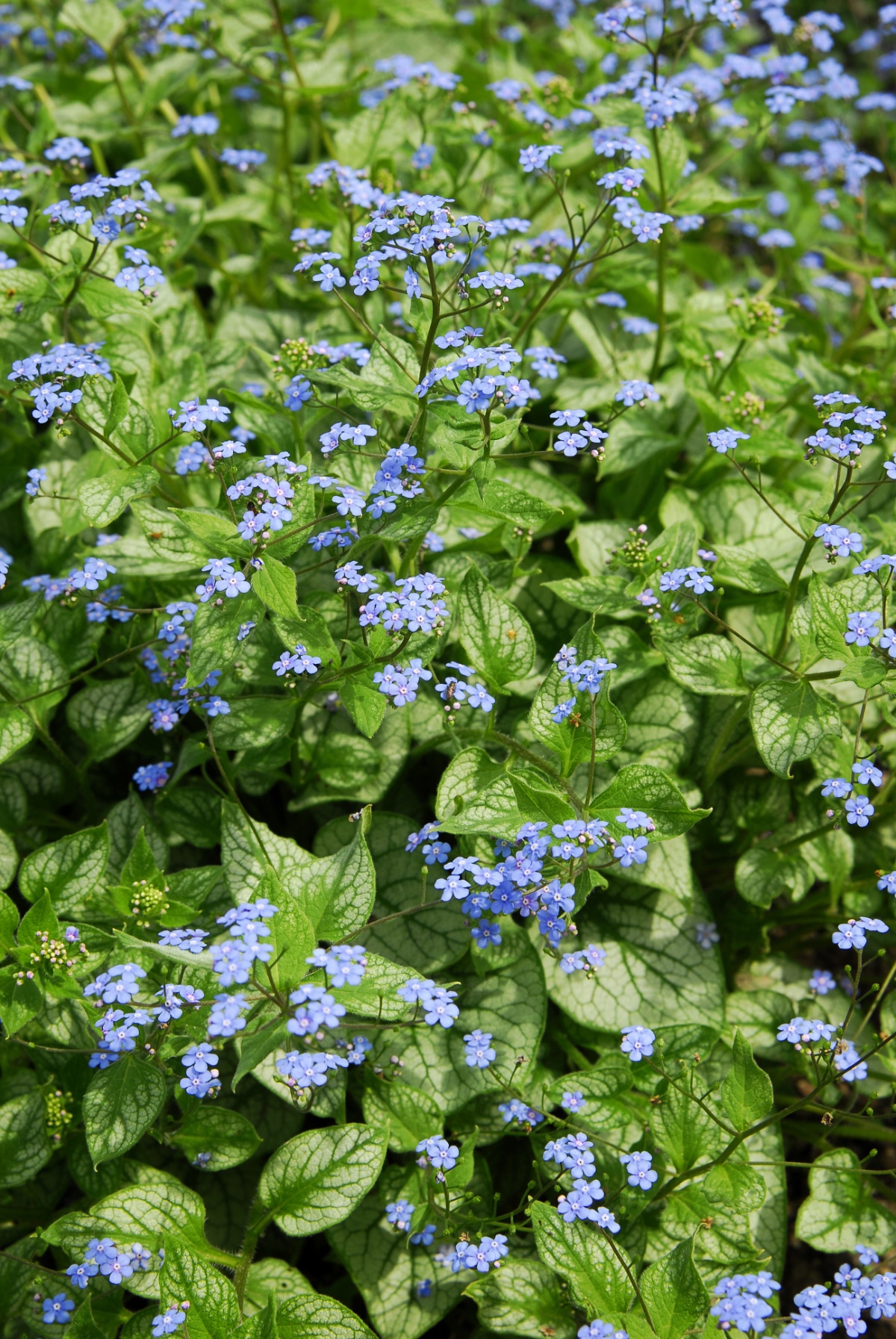
These plants bear a striking resemblance to Forget-Me-Nots while possessing appealing green heart-shaped foliage paired with clumps of tiny blue flowers. They thrive in shaded areas which makes them an excellent addition to your landscape. Their blooming season occurs during the spring, boasting attractive and sweet features. However, the true allure comes from its multi-colored or variegated leaves. These plants are uncomplicated to maintain and grow effortlessly in most regions. When grown in large numbers, they resemble a carpet of rich greens. This perennial flourishes in full shade and prefers cooler summers in the northern regions. It is resistant to rabbits and deer while being hardy in zones 3-8. In addition, Coral Bells, also known as Heuchera, share similar characteristics.
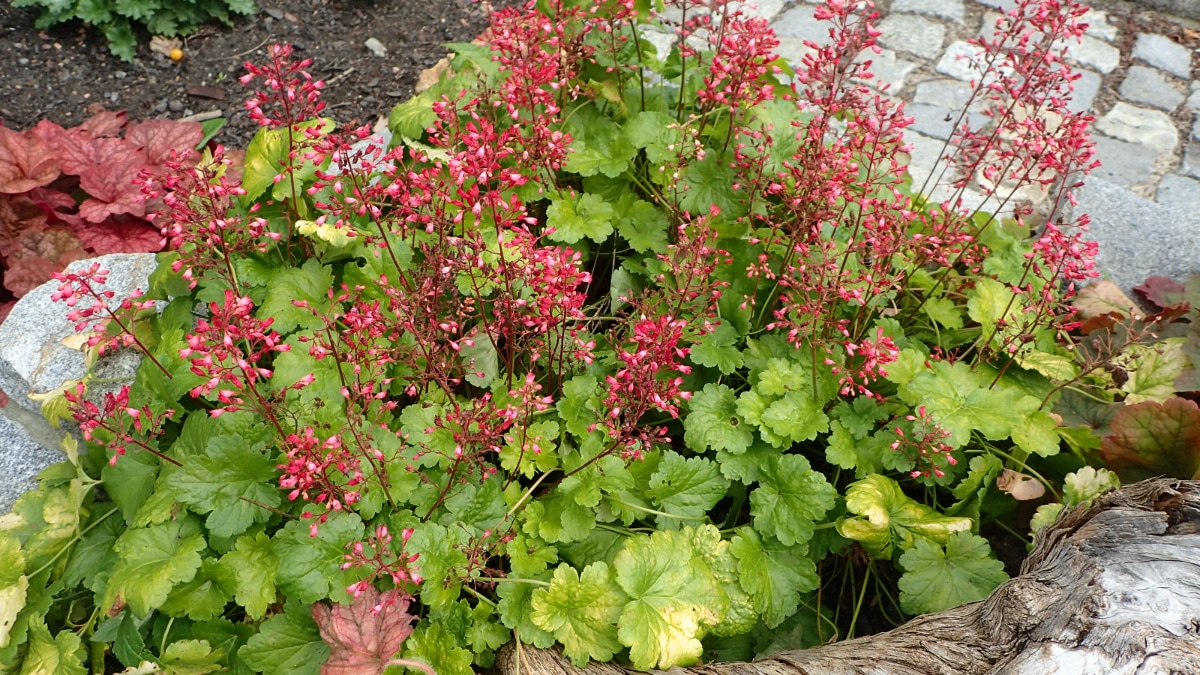
If you’re looking for a flower that won’t attract deer, consider growing Heuchera. Not only is it known for its stunning foliage, but it also adds a burst of color to any shaded garden. The leaves typically have a deep burgundy or purple hue, but there are also lime green and red varieties available. In the spring, the plant produces thin stems of tiny bell-shaped flowers that look dainty and sweet. With long-lasting blooms and striking foliage, this perennial is an easy choice for any shade-loving gardener. Additionally, the flowers are beloved by hummingbirds and butterflies, but the plant is usually avoided by deer and rabbits. Heuchera can survive in zones 4-9. Another alternative is False Goat’s Beard.
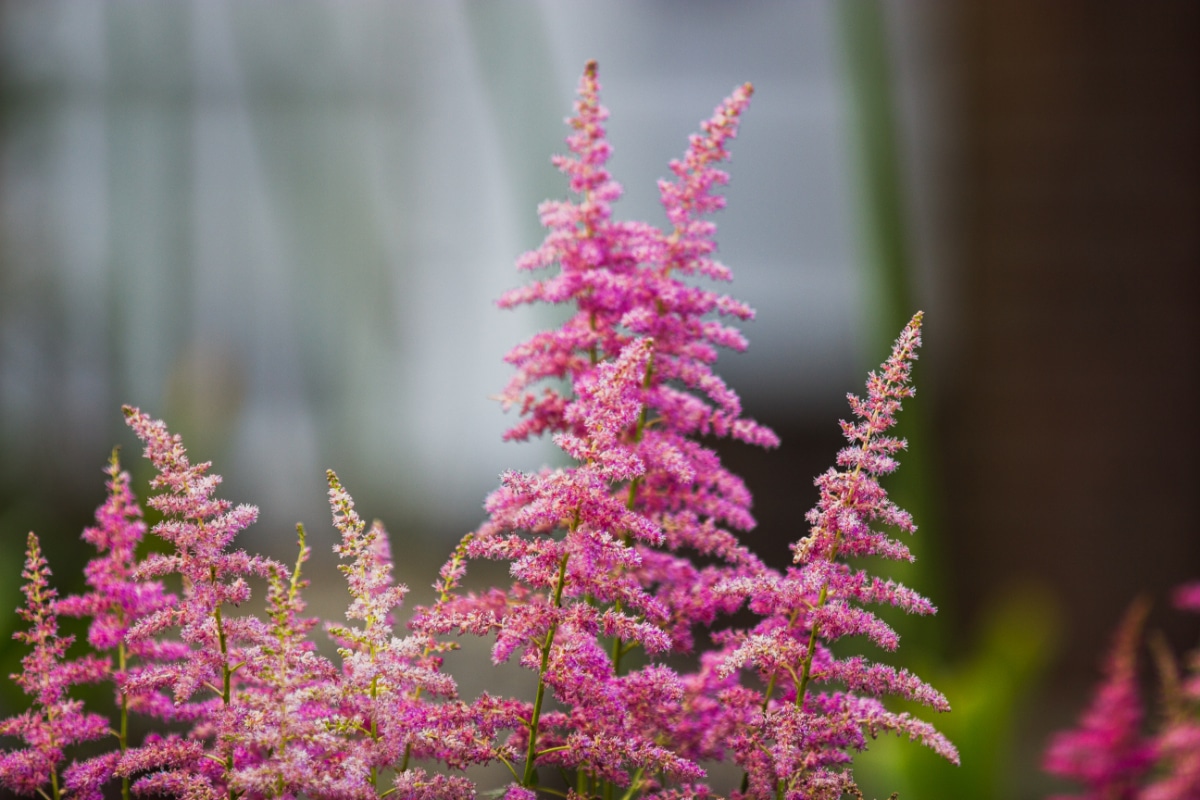
One of the most unique flowers to cultivate is the False Goat’s Beard. This plant boasts tall, white or purple blooms that make for a stunning display in shaded areas. As a native option, it can withstand drought and heat and has attractive dark-green foliage even when not in bloom. Pollinators are drawn to the flowers that stand out up to 2-feet above the foliage for up to four weeks. False Goat’s Beard thrives in zones 5b-8. While growing vegetables in a shade garden may pose a challenge, there are plenty of gorgeous and captivating plants to choose from to beautify your backyard and lift your mood. So, don’t hesitate to fill those shady spaces with interesting and lovely plants.





